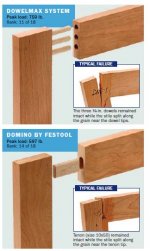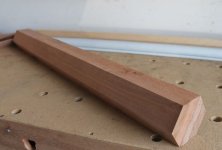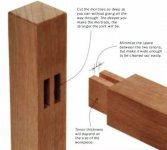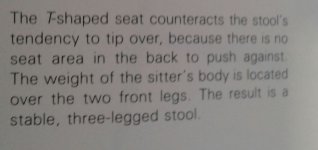According to the Fine Woodworking joinery test, the domino joint (1 domino) broke at 597 pounds; dowel joint (3 dowels) at 759 pounds.
But this video at 5:37 shows something different: The domino joint breaking at 600 pounds, even though 2 dominoes were used:
=337
(At 7:20, the video shows the dowel joint (5 dowels) failing at 900 pounds, which seemed to be in line with the FW's test on 3 dowels.)
Comments welcome.
Unfortunately, the video doesn't have a close-up of the joints after the test.
But this video at 5:37 shows something different: The domino joint breaking at 600 pounds, even though 2 dominoes were used:
=337
(At 7:20, the video shows the dowel joint (5 dowels) failing at 900 pounds, which seemed to be in line with the FW's test on 3 dowels.)
Comments welcome.
Unfortunately, the video doesn't have a close-up of the joints after the test.







